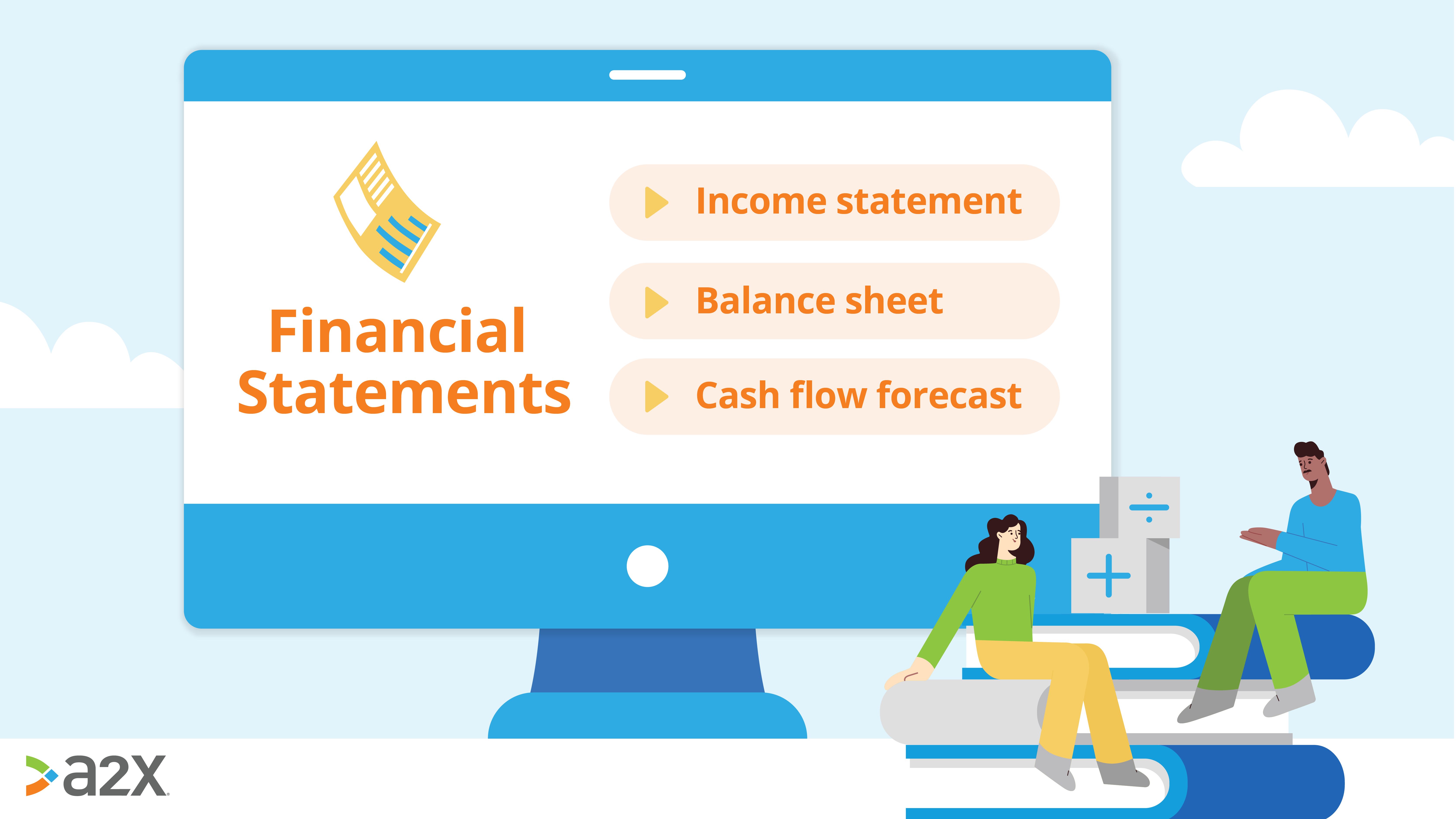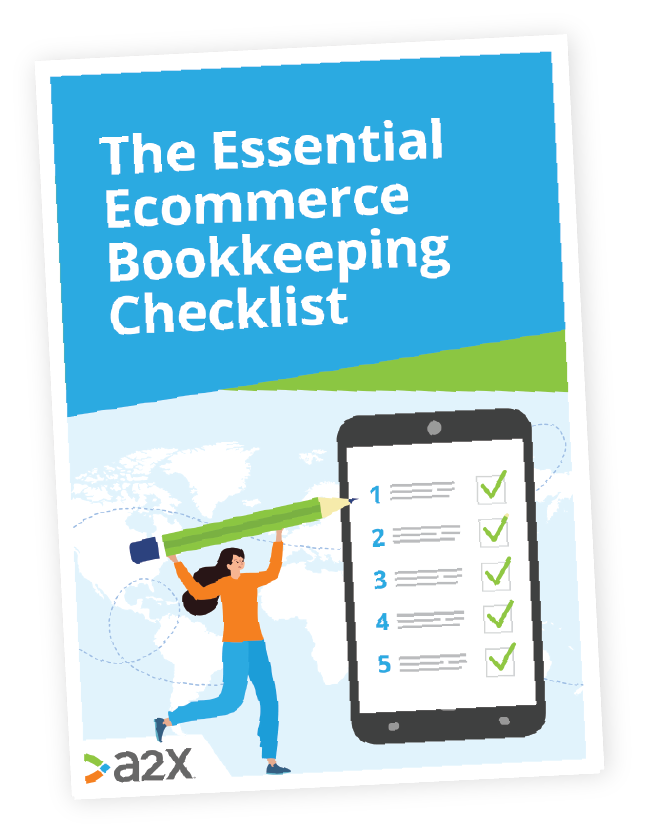
Ecommerce Financials 101: Income Statement Vs. Balance Sheet Vs. Cash Flow Forecast

“Don’t ever let your business get ahead of the financials. Accounting, accounting, accounting. Know your numbers.”
- Tilman J. Fertitta, Chairman and CEO, Landry’s Inc.
It’s almost impossible to succeed without a good handle on your numbers, especially in ecommerce.
32% of ecommerce startups fail because they run out of cash, 29% fail because of cost and pricing issues, and others fail because they try to scale too quickly.
So how do you avoid these issues?
Financial statements, that’s how.
In this guide to ecommerce financials:
Table of Contents
Want to feel completely confident in your ecommerce bookkeeping?
Businesses that document their processes grow faster and make more profit. Download our free checklist to get all of the essential ecommerce bookkeeping processes you need every week, month, quarter, and year.
Download it here
What are financial statements?
Financial statements are spreadsheets that show the inner financial workings of your business.
They show things like your profit, loss, expenses, seasonal trends, revenue, tax, and more.
Knowing these things are essential for running your business properly.
And despite what you might think, they’re actually quite straightforward. And we’ve been doing something similar for thousands of years.
The origin of financial statements
Although the cloud is a relatively new concept, recording financial transactions is not.
Bookkeeping has been around for even longer than the first coins.
Ancient Egyptians, Romans and Greeks all recognized the need to count and measure the fruits of their labor.
Borrowing money, debts, mortgages, and international transfers all evolved from the understanding that financial transactions must be recorded to keep order.
Even centuries later, with cloud accounting, the original principal remains the same.
When money is spent on one side, it is gained on another.
This is the essence of double entry bookkeeping.
Double entry bookkeeping
“Double entry system of accounting is one which reports business transactions in such a way that each entry is recorded twice – first as a debit and second as a credit.
This system was originally developed to reduce mistakes associated with bookkeeping because at the end of the day, it is expected that the sum of the debit side should be equal to that of the credit side; otherwise something must have gone wrong somewhere.”
In simple terms, every credit needs a debit.
More specifically, the debit entries need to equal the credit entries.
We’ll see this in a bit more detail when we look at balance sheets.
The most important thing to remember is that there are always two sides of a transaction.
Why do we need financial statements?
Financial statements help you identify the health of your business.
Is it flourishing or struggling?
Without them, you’d have to run your business on a hunch. With them, you can make informed decisions about investments and growth.
“An ability to understand the financial health of a company is one of the most vital skills for aspiring investors, entrepreneurs, and managers to develop… Financial statements offer a window into the health of a company, which can be difficult to gauge using other means.”
Would you buy a house without understanding what you can afford? A bank wouldn’t grant you a mortgage if you didn’t know your income and expenses.
It’s the same with your ecommerce business. The numbers inform your decisions and back them up.
Let’s take a look at which ones you need.
What are the most common financial statements?
There are three financial documents that every ecommerce business should have:
-
An income statement tells you how much money you have earned (or lost) over a given period of time.
-
A balance sheet is an assessment of what your business is worth right now; a snapshot of your financial position.
-
A cash flow forecast is an estimate of how much cash you’ll likely have available over the next given period of time.
While these three documents have fundamentally different goals, they all give you clarity about your business’s finances.
It’s important to note here that you don’t have to create these financial documents by yourself.
If you’re using a cloud-based accounting software like Xero or QuickBooks Online, your financial statements can be created automatically in minutes.
Let’s look at what goes into each of the statements.
Income Statements 101
Sometimes called a “profit and loss statement”, or “P&L”.
An income statement gives you a clear overview of what’s coming in and what’s going out of your business.
All your business transactions go into it, and are grouped accordingly. You can see what your company’s income and expenses are, and how that trickles down to the bottom line.
If you’re spending too much money in one area, you’ll soon discover what the effect of this is on the business as a whole.
“Beware of small expenses; a small leak will sink a great ship.”
With a sound income statement, you’ll also be able to prove financial stability to investors and banks.
To see an example and an in-depth explanation of income statements, see our dedicated guide.
Balance sheets 101
Balance sheets are a snapshot of your current financial position.
Remember how there are two sides of every transaction? That’s captured in a balance sheet.
There are two columns, and three parts: assets, liabilities and equity.
Assets go in the left hand column, and liabilities and equity go in the right.
The sum of the left column should equal the sum of the right, meaning your assets should equal your liabilities and your equity.
**It shouldn’t be surprising that a balance sheet must **balance.
There’s a bit more to it than that though: assets and liabilities are broken down into current and non-current categories.
This refers to whether you are likely to be able to liquidate them (turn them into cash) within 12 months or not.
What your balance sheet tells you:
-
How much inventory you have, and how that compares to your income.
-
Your financial obligations at the time.
-
How your equity is growing or shrinking, if you compare past balance sheets.
For more details on balance sheets and how to use them, check out our dedicated guide.
Cash flow forecasts 101
Knowing how much cash you have available and when is a key component of running a business.
And your life in general, really.
If you know that one month is likely to be more flush with cash than another, you can make smarter decisions about when to spend and when to save.
*“Never take your eyes off the cash flow because it’s the lifeblood of business.” *
You can calculate your cash flow forecast with this formula:
Beginning cash + projected inflows – projected outflows = ending cash
Imagine you have a few bills due in the next six weeks.
Your cash flow forecast should tell you whether you can afford to pay these at that time.
By looking ahead, you can prevent potential problems by creating solutions before they occur.
For more information about cash flow forecasts and how to use them, here’s our dedicated guide.
Financial statements compared
Here’s a quick summary of the three statements:
Income statement (or P&L) | Cash flow statement | Balance sheet |
Shows revenue and expenses in a particular period | Shows cash inflows from all business activities and outflows that pay for them | A snapshot of the business’s current assets, equity and liabilities |
Who wants to see my financial statements?
A few different parties could be interested in your financial statements.
-
You should be most interested in them for making business decisions.
-
Your bank, if you’re applying for a loan.
-
Investors, both current ones if you have them, and potential ones.
-
Your accountant, to see a holistic picture of the health of your business.
-
The IRS if you’re being audited.
Your statements should be up-to-date at all times.
Or at the very least, quick and easy to generate.
Why are financials more challenging for ecommerce businesses?
Ecommerce businesses can have an extraordinary volume of transactions.
Each sale encounters costs that need to be recorded.
When it comes to getting paid out, you receive one lump sum in your bank account.
While that looks very tidy, it doesn’t tell the whole story. It’s difficult to see from the complex reports what has already been deducted from that figure, for shipping, tax, or returns.
Unfortunately, you need this information to be able to create your financial statements.
**When you use a cloud accounting system and A2X, this problem is solved. **
Alongside your payout, A2X posts a journal summary of your transactions straight into your cloud accounting system so all your numbers are ready to work with.
Your cloud accounting system can then create these financial statements so you can analyze them and see how your business is going.
Find out more about how it works here.
Get our custom ecommerce bookkeeping checklist for sellers that want accurate financial statements
There’s a lot to ecommerce business accounting.
Daily, weekly, monthly, quarterly - without a dedicated bookkeeper, how do you keep up?
We’ve built a bookkeeping checklist for ecommerce sellers looking for help.
With it, you can ensure all tasks are completed consistently and on time.
Work smarter, not harder with our free checklist.
Want to feel completely confident in your ecommerce bookkeeping?
Businesses that document their processes grow faster and make more profit. Download our free checklist to get all of the essential ecommerce bookkeeping processes you need every week, month, quarter, and year.
Download it here

